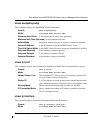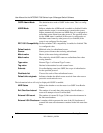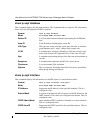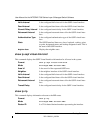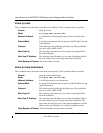
User Manual for the NETGEAR 7300 Series Layer 3 Managed Switch Software
Routing Commands 9-45
202-10009-01_060204
Neighbor Events The number of times this neighbor relationship has changed state,
or an error has occurred.
External LSA Count The number of external (LS type 5) link-state advertisements in
the link-state database.
LSAs Received
The number of LSAs received.
Originate New LSAs The number of LSAs originated.
show ip ospf neighbor
This command displays the OSPF neighbor table list. When a particular neighbor ID is specified,
detailed information about a neighbor is given. The information below will only be displayed if
OSPF is enabled and the interface has a neighbor. The IP address is the IP address of the neighbor.
Format
show ip ospf neighbor <ipaddr> <slot/port>
Mode Privileged EXEC and User EXEC
Interface Is the slot/port identifying the internal interface number of the
OSPF neighbor.
Router Id Is a 4-digit dotted-decimal number identifying neighbor router.
Options An integer value that indicates the optional OSPF capabilities
supported by the neighbor. The neighbor's optional OSPF capa-
bilities are also listed in its Hello packets. This enables received
Hello Packets to be rejected (i.e., neighbor relationships will not
even start to form) if there is a mismatch in certain crucial OSPF
capabilities.
Router Priority Displays the OSPF priority for the specified interface. The prior-
ity of an interface is a priority integer from 0 to 255. A value of '0'
indicates that the router is not eligible to become the designated
router on this network.
State The types are:
Down- initial state of the neighbor conversation - no recent infor-
mation has been received from the neighbor.
Attempt - no recent information has been received from the
neighbor but a more concerted effort should be made to contact
the neighbor.
Init - an Hello packet has recently been seen from the neighbor,
but bi-directional communication has not yet been established.
2 way - communication between the two routers is bi-directional.



